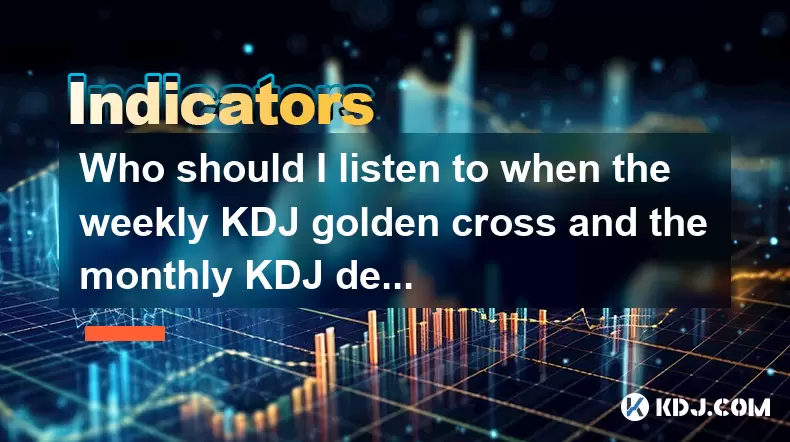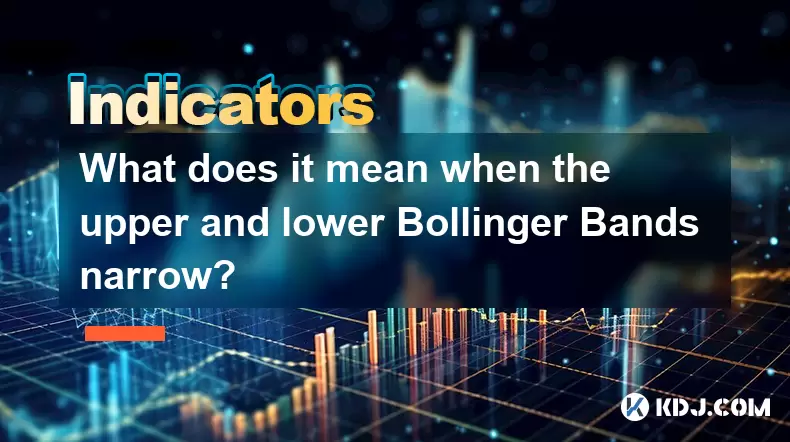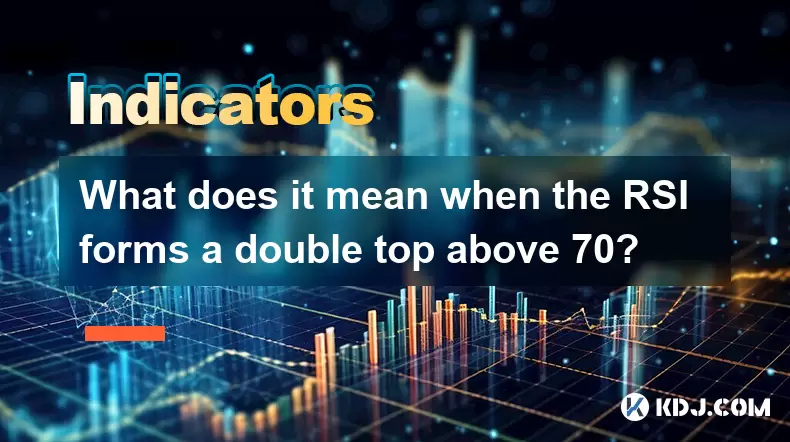-
 Bitcoin
Bitcoin $116800
0.71% -
 Ethereum
Ethereum $4211
6.94% -
 XRP
XRP $3.276
1.68% -
 Tether USDt
Tether USDt $1.000
0.02% -
 BNB
BNB $807.0
3.00% -
 Solana
Solana $180.5
3.24% -
 USDC
USDC $0.9999
0.01% -
 Dogecoin
Dogecoin $0.2406
9.02% -
 TRON
TRON $0.3357
-1.10% -
 Cardano
Cardano $0.8047
3.16% -
 Hyperliquid
Hyperliquid $43.81
7.97% -
 Chainlink
Chainlink $21.08
10.16% -
 Stellar
Stellar $0.4506
1.97% -
 Sui
Sui $3.916
4.69% -
 Bitcoin Cash
Bitcoin Cash $568.3
-1.85% -
 Hedera
Hedera $0.2628
2.48% -
 Avalanche
Avalanche $24.17
4.54% -
 Ethena USDe
Ethena USDe $1.001
0.03% -
 Litecoin
Litecoin $121.4
0.35% -
 Toncoin
Toncoin $3.408
2.28% -
 UNUS SED LEO
UNUS SED LEO $8.978
-0.08% -
 Shiba Inu
Shiba Inu $0.00001376
7.59% -
 Uniswap
Uniswap $10.86
2.94% -
 Polkadot
Polkadot $4.079
5.33% -
 Dai
Dai $1.000
0.02% -
 Pepe
Pepe $0.00001231
10.28% -
 Bitget Token
Bitget Token $4.502
0.79% -
 Cronos
Cronos $0.1576
3.63% -
 Monero
Monero $271.1
0.48% -
 Ethena
Ethena $0.7336
18.38%
Who should I listen to when the weekly KDJ golden cross and the monthly KDJ dead cross? Is it a cycle conflict or asynchrony?
When a weekly KDJ golden cross and a monthly KDJ dead cross occur together, traders must consider their time horizon and risk tolerance to navigate the cycle conflict effectively.
Jun 02, 2025 at 11:14 pm

When dealing with the situation where the weekly KDJ golden cross and the monthly KDJ dead cross occur simultaneously, it's essential to understand the implications and the dynamics at play. The KDJ indicator is a popular technical analysis tool used in the cryptocurrency market to identify potential trend reversals and overbought or oversold conditions. A golden cross on the weekly chart indicates a bullish signal, while a dead cross on the monthly chart suggests a bearish trend. This scenario presents a cycle conflict or asynchrony, and deciding which signal to prioritize can be challenging.
Understanding the KDJ Indicator
The KDJ indicator, also known as the Stochastic Oscillator, is used to gauge the momentum of a cryptocurrency's price movement. It consists of three lines: K, D, and J. A golden cross occurs when the K line crosses above the D line, signaling a potential upward trend. Conversely, a dead cross happens when the K line crosses below the D line, indicating a potential downward trend. The KDJ indicator is sensitive to price movements, making it useful for short-term trading but also prone to generating false signals.
Analyzing Weekly and Monthly KDJ Signals
The weekly KDJ golden cross suggests that the cryptocurrency's price may be entering a bullish phase in the short to medium term. This signal is often considered reliable for shorter time frames, as it reflects recent price movements and momentum. On the other hand, the monthly KDJ dead cross indicates that the cryptocurrency may be entering a bearish phase in the longer term. This signal is more significant for long-term investors, as it reflects broader market trends and longer-term momentum.
The Concept of Cycle Conflict and Asynchrony
Cycle conflict occurs when different time frames provide contradictory signals, as seen in the case of a weekly golden cross and a monthly dead cross. Asynchrony refers to the lack of synchronization between these cycles, making it difficult to determine the overall market direction. In such situations, traders and investors must weigh the importance of short-term versus long-term signals and consider other technical and fundamental factors to make informed decisions.
Factors to Consider When Making a Decision
When faced with a weekly KDJ golden cross and a monthly KDJ dead cross, several factors should be taken into account:
- Time Horizon: Your investment or trading time horizon plays a crucial role. Short-term traders may prioritize the weekly golden cross, while long-term investors might focus on the monthly dead cross.
- Market Context: Consider the broader market context, including other technical indicators, market sentiment, and news events. For instance, if the overall market is bullish, the weekly golden cross might be more significant.
- Risk Tolerance: Your risk tolerance will influence your decision. If you are risk-averse, you might lean towards the monthly dead cross and consider exiting or reducing your position.
- Other Indicators: Utilize other technical indicators, such as moving averages, RSI, and MACD, to confirm or contradict the KDJ signals. A confluence of signals can provide a clearer picture.
Practical Example: Analyzing a Cryptocurrency Chart
Let's consider a practical example of a cryptocurrency chart exhibiting a weekly KDJ golden cross and a monthly KDJ dead cross. Suppose you are analyzing the price chart of Bitcoin (BTC) and notice these conflicting signals.
Weekly Chart Analysis:
- Open the weekly chart of BTC and identify the KDJ lines.
- Observe that the K line has crossed above the D line, forming a golden cross.
- This suggests that BTC may experience a short-term bullish trend.
Monthly Chart Analysis:
- Open the monthly chart of BTC and identify the KDJ lines.
- Notice that the K line has crossed below the D line, forming a dead cross.
- This indicates that BTC may be entering a longer-term bearish trend.
Decision-Making Process:
- Consider your investment horizon. If you are a short-term trader, the weekly golden cross might be more relevant.
- Evaluate the broader market context. Check if other cryptocurrencies are also showing bullish signals on weekly charts.
- Assess your risk tolerance. If you are willing to take on more risk, you might decide to trade based on the weekly golden cross.
- Use other technical indicators to confirm the signals. For example, if the weekly moving averages are also bullish, it might reinforce the weekly golden cross.
Strategies for Dealing with Cycle Conflict
To navigate the cycle conflict between a weekly KDJ golden cross and a monthly KDJ dead cross, consider the following strategies:
- Diversification: Diversify your portfolio to mitigate the risk of conflicting signals. Allocate assets based on your risk tolerance and investment horizon.
- Position Sizing: Adjust your position sizes based on the signals. You might take a smaller position if you are unsure about the conflicting signals.
- Stop-Loss and Take-Profit Orders: Use stop-loss and take-profit orders to manage risk. Set these orders based on the conflicting signals to protect your investment.
- Continuous Monitoring: Continuously monitor the market and adjust your strategy as new information becomes available. The KDJ indicator is sensitive to price changes, so staying vigilant is crucial.
Conclusion and FAQs
In conclusion, dealing with a weekly KDJ golden cross and a monthly KDJ dead cross requires careful consideration of your investment horizon, market context, risk tolerance, and other technical indicators. By understanding the implications of these signals and employing appropriate strategies, you can navigate the cycle conflict and make informed decisions in the cryptocurrency market.
Frequently Asked Questions
Q1: Can the KDJ indicator be used effectively for all cryptocurrencies?
A1: The KDJ indicator can be used for all cryptocurrencies, but its effectiveness may vary depending on the liquidity and volatility of the specific cryptocurrency. For highly liquid and volatile assets like Bitcoin and Ethereum, the KDJ indicator can provide valuable insights. However, for less liquid cryptocurrencies, the indicator might generate more false signals due to erratic price movements.
Q2: How can I confirm the reliability of a KDJ signal?
A2: To confirm the reliability of a KDJ signal, you should use other technical indicators in conjunction with the KDJ. For instance, if a KDJ golden cross is accompanied by a bullish moving average crossover and a rising RSI, the signal is more likely to be reliable. Additionally, consider the overall market sentiment and any significant news events that could impact the cryptocurrency's price.
Q3: Should I always prioritize the longer-term signal over the shorter-term signal?
A3: Not necessarily. The decision to prioritize a longer-term signal over a shorter-term signal depends on your investment horizon and risk tolerance. If you are a long-term investor, you might give more weight to the monthly KDJ signal. However, if you are a short-term trader, the weekly KDJ signal could be more relevant. It's essential to align your strategy with your investment goals and risk profile.
Q4: How often should I check the KDJ indicator on different time frames?
A4: The frequency of checking the KDJ indicator depends on your trading style. For active traders, checking the indicator daily or even intraday on shorter time frames like the hourly chart can be beneficial. For longer-term investors, weekly and monthly checks might be sufficient. It's important to maintain a consistent monitoring schedule to stay informed about potential trend changes.
Disclaimer:info@kdj.com
The information provided is not trading advice. kdj.com does not assume any responsibility for any investments made based on the information provided in this article. Cryptocurrencies are highly volatile and it is highly recommended that you invest with caution after thorough research!
If you believe that the content used on this website infringes your copyright, please contact us immediately (info@kdj.com) and we will delete it promptly.
- AI Coin Mania: Dubai Millionaires Eye 20x Gains!
- 2025-08-09 23:10:12
- ChatGPT's Hot Takes: Meme Coins to Buy Now for a Wild 2025!
- 2025-08-09 23:10:12
- Jurassic Park Vibes in Your Pocket: The Colourful Canadian Coin Featuring a Dinosaur Eye
- 2025-08-09 23:50:12
- Altcoins on the Radar: VeChain, Ethereum, and the Shifting Crypto Landscape
- 2025-08-09 23:50:12
- Crypto Airdrops & Opportunities: What's Hot in August 2025
- 2025-08-09 22:30:12
- XRP, Cardano, and the Alluring Alternatives: A 2025 Crypto Landscape
- 2025-08-09 22:35:12
Related knowledge

What does it mean when the price is trading above the SAR indicator but the red dots are densely packed?
Aug 09,2025 at 11:49pm
Understanding the SAR Indicator and Its Visual SignalsThe SAR (Parabolic Stop and Reverse) indicator is a technical analysis tool used primarily to de...

What does it mean when the MACD histogram continues to shorten but the price reaches a new high?
Aug 09,2025 at 09:29pm
Understanding the MACD Histogram and Its ComponentsThe MACD (Moving Average Convergence Divergence) indicator is a widely used technical analysis tool...

What does it mean when the Triple Moving Average (TRIX) turns downward but the price doesn't fall?
Aug 09,2025 at 12:42pm
Understanding the Triple Moving Average (TRIX) IndicatorThe Triple Moving Average, commonly known as TRIX, is a momentum oscillator designed to filter...

What does it mean when the Williams' oscillator repeatedly hits bottoms but fails to rebound?
Aug 09,2025 at 09:28am
Understanding the Williams %R OscillatorThe Williams %R oscillator, developed by Larry Williams, is a momentum indicator used in technical analysis to...

What does it mean when the upper and lower Bollinger Bands narrow?
Aug 09,2025 at 03:00pm
Understanding Bollinger Bands in Cryptocurrency TradingBollinger Bands are a widely used technical analysis tool in the cryptocurrency market, develop...

What does it mean when the RSI forms a double top above 70?
Aug 09,2025 at 05:50pm
Understanding the RSI and Overbought ConditionsThe Relative Strength Index (RSI) is a momentum oscillator that measures the speed and change of price ...

What does it mean when the price is trading above the SAR indicator but the red dots are densely packed?
Aug 09,2025 at 11:49pm
Understanding the SAR Indicator and Its Visual SignalsThe SAR (Parabolic Stop and Reverse) indicator is a technical analysis tool used primarily to de...

What does it mean when the MACD histogram continues to shorten but the price reaches a new high?
Aug 09,2025 at 09:29pm
Understanding the MACD Histogram and Its ComponentsThe MACD (Moving Average Convergence Divergence) indicator is a widely used technical analysis tool...

What does it mean when the Triple Moving Average (TRIX) turns downward but the price doesn't fall?
Aug 09,2025 at 12:42pm
Understanding the Triple Moving Average (TRIX) IndicatorThe Triple Moving Average, commonly known as TRIX, is a momentum oscillator designed to filter...

What does it mean when the Williams' oscillator repeatedly hits bottoms but fails to rebound?
Aug 09,2025 at 09:28am
Understanding the Williams %R OscillatorThe Williams %R oscillator, developed by Larry Williams, is a momentum indicator used in technical analysis to...

What does it mean when the upper and lower Bollinger Bands narrow?
Aug 09,2025 at 03:00pm
Understanding Bollinger Bands in Cryptocurrency TradingBollinger Bands are a widely used technical analysis tool in the cryptocurrency market, develop...

What does it mean when the RSI forms a double top above 70?
Aug 09,2025 at 05:50pm
Understanding the RSI and Overbought ConditionsThe Relative Strength Index (RSI) is a momentum oscillator that measures the speed and change of price ...
See all articles

























































































